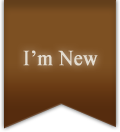How can I enter the presence of God? This is the question that most of the world’s religions ask, and most of them give some sort of ethical answer – do certain things, and avoid other behaviors. The design of the Tabernacle points in a completely different direction.
Of course, there can be no doubt that the whole Tabernacle symbolizes the presence of God. In fact, in Exodus 25:22, God specifically said that He would meet Moses in the space just above the mercy seat, which covers the Ark of the Covenant. Thus, as the people carried the Tabernacle wherever they went, they were reminded that God was dwelling with them (Exodus 29:45).
But at the same time, they were also reminded that they had to keep their distance. Adam and Eve had enjoyed unfettered access to God, but when they rebelled against Him, they were sent away from His presence, and cherubim stood guard, preventing them from returning to Eden (Genesis 3:24). We see images of the same guardsmen molded in gold on top of the Ark of the Covenant (Exodus 25:20), and woven into the tapestries that formed the walls of the Tabernacle (Exodus 26:1). Moreover, the veil which separated the ark from the rest of the Tabernacle was also woven with images of cherubim (Exodus 26:31). Since God was completely surrounded by His guards, the people couldn’t come near to Him.
But there was one access point. The front of the Tabernacle had a screen over it, but this time there were no cherubim woven into it (Exodus 26:36). Inside that screen were a seven-branched lampstand (Exodus 25:31-40) and a table on which the Bread of the Presence was to be placed (Exodus 25:23-30). And in front of the screen was an enormous bronze altar, on which animals were to be sacrificed (Exodus 27:1-8).
And all of these things – the altar, the table and the lampstand – point to Jesus, don’t they? For didn’t Jesus say, “I am the bread of life” (John 6:35)? Didn’t Jesus say, “I am the light of the world” (John 8:12)? And on the cross didn’t Jesus offer up the perfect sacrifice to atone for all our sins? And when Jesus died on the cross, wasn’t the veil of the Temple torn in two from top to bottom (Matthew 27:51)?
In other words, if the Tabernacle symbolizes the way our sin prevents us from approaching God, it also points to Jesus as the only Way into the presence of the Father. So let’s stop trying to please God with what we do or leave undone. Instead, let’s cling to the cross of Christ, the Way, the Truth and the Life, the only way any of us may come to the Father (John 14:6).
Exodus 26:31-27:8 (NASB)
31 “And you shall make a veil of blue and purple and scarlet material and fine twisted linen; it shall be made with cherubim, the work of a skillful workman.
32 “And you shall hang it on four pillars of acacia overlaid with gold, their hooks also being of gold, on four sockets of silver.
33 “And you shall hang up the veil under the clasps, and shall bring in the ark of the testimony there within the veil; and the veil shall serve for you as a partition between the holy place and the holy of holies.
34 “And you shall put the mercy seat on the ark of the testimony in the holy of holies.
35 “And you shall set the table outside the veil, and the lampstand opposite the table on the side of the tabernacle toward the south; and you shall put the table on the north side.
36 “And you shall make a screen for the doorway of the tent of blue and purple and scarlet material and fine twisted linen, the work of a weaver.
37 “And you shall make five pillars of acacia for the screen, and overlay them with gold, their hooks also being of gold; and you shall cast five sockets of bronze for them.
“And you shall make the altar of acacia wood, five cubits long and five cubits wide; the altar shall be square, and its height shall be three cubits.
2 “And you shall make its horns on its four corners; its horns shall be of one piece with it, and you shall overlay it with bronze.
3 “And you shall make its pails for removing its ashes, and its shovels and its basins and its forks and its firepans; you shall make all its utensils of bronze.
4 “And you shall make for it a grating of network of bronze, and on the net you shall make four bronze rings at its four corners.
5 “And you shall put it beneath, under the ledge of the altar, that the net may reach halfway up the altar.
6 “And you shall make poles for the altar, poles of acacia wood, and overlay them with bronze.
7 “And its poles shall be inserted into the rings, so that the poles shall be on the two sides of the altar when it is carried.
8 “You shall make it hollow with planks; as it was shown to you in the mountain, so they shall make it.



